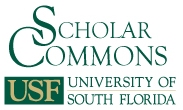Keywords
sensitivity, specificity, referral bial, two-way tables, medical screening
Abstract
An extended study of accuracy in medical screening is presented as a useful application to increase students’ quantitative reasoning skills. Two detailed examples are presented. The first explores the frequency of obtaining false positive results from a medical screening tool while the second examines the issue of referral bias and its effect on the apparent sensitivity and specificity of the screening tool. Results from student assessments indicate that the activity increases one’s ability to define terms such as “false positive” and “false negative” and increases one’s ability to read and compute with information obtained from a two-way table. Teacher assessment results indicate that the activity is challenging and could be used in existing high school or college classrooms. Additionally, links to a student activity, instructor notes, and Excel calculation tool are provided.
DOI
http://dx.doi.org/10.5038/1936-4660.1.2.5
Recommended Citation
Boersma, Stuart, and Teri Willard. "False Positives and Referral Bias: Content for a Quantitative Literacy Course." Numeracy 1, Iss. 2 (2008): Article 5. DOI: http://dx.doi.org/10.5038/1936-4660.1.2.5
Creative Commons License

This work is licensed under a Creative Commons Attribution-Noncommercial 4.0 License
Student Activity [ref: Boersma and Willard, in Numeracy 1(2)]
RF2-FalsePositiveNotes.doc (157 kB)
Instructor Notes [ref. Boersma and Willard, in Numeracy 1(2)]
RF3-FalsePositiveTool.xls (82 kB)
Excel Tool [ref. Boersma and Willard, in Numeracy 1(2)]

